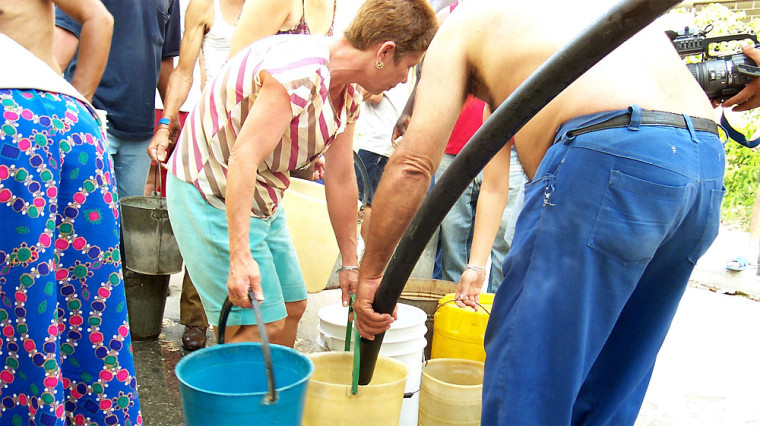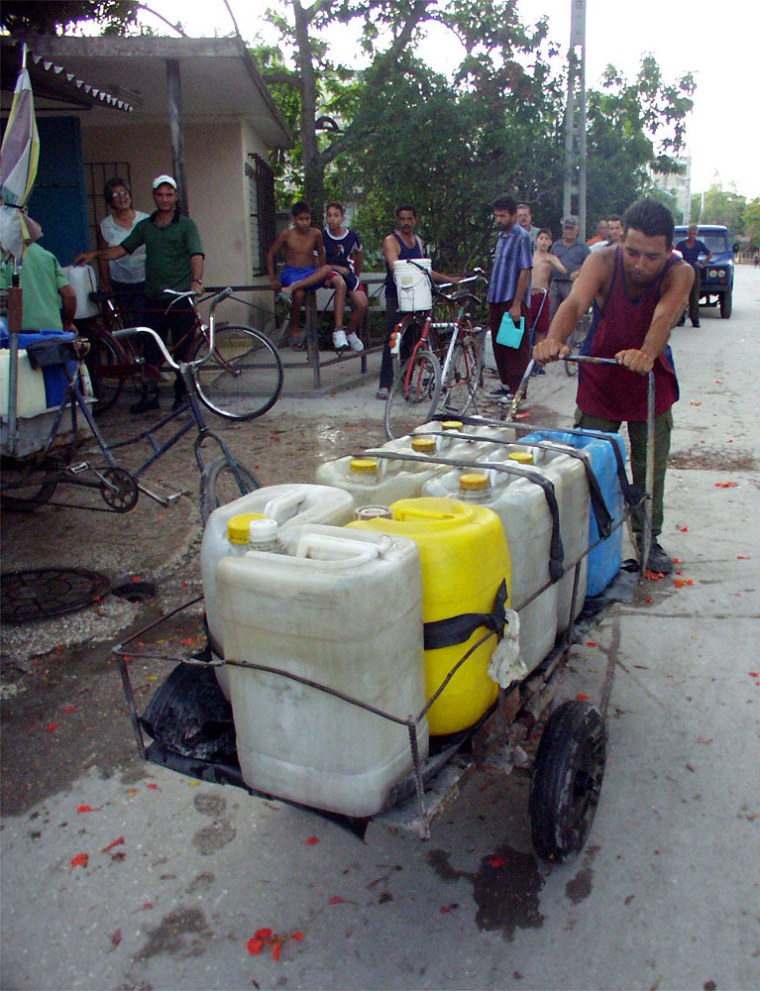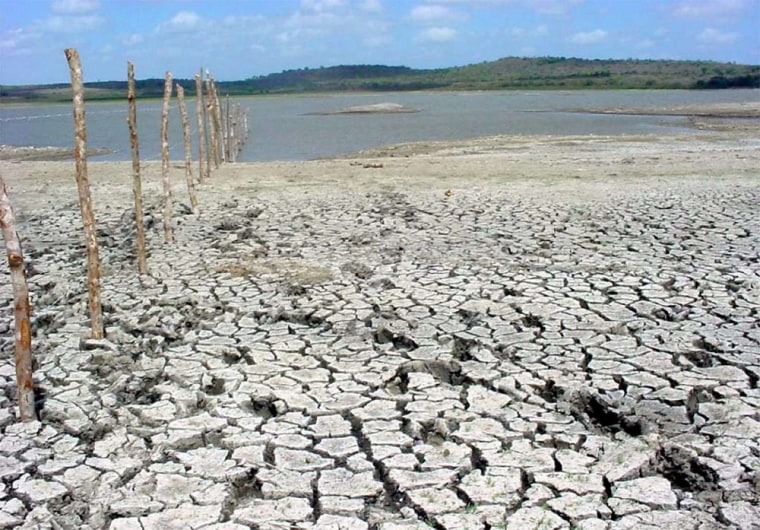A severe drought enveloping eastern Cuba has eroded 40 percent of the farmland, starved thousands of heads of cattle and has close to 4 million people counting every drop of water they consume.
Cuba’s Civil Defense declared a state of alert in four provinces — Camaguey, Las Tunas, Holguin and Guantanamo — while closely monitoring drought conditions in two others.
Last Thursday, authorities in central Sancti Spiritus reported the first signs of dropping water levels — proof the drought is creeping west.
Holguin, one of the hardest-hit cities, is just a step away from being declared a state of emergency, said Oscar Lugo, a member of the provincial branch of Poder Popular, Cuba’s parliament.
Two of the city’s three water basins have run dry, one eight months ago and the other in early June, leaving more than 100,000 people without any stable source of water.
Strict rationing allots inhabitants about 6 gallons of water a day, a fraction of the daily 50-gallon average.

May was the official beginning of Cuba’s rainy season, but less than 2 inches fell last month, 72 percent below average. This year, rainfall was 42 percent of the yearly average.
“The drought has robbed underground water levels of some 10 feet over the past 10 years, leaving over 5,000 wells across the province dry,” said Leandro Bermudez, a geologist and the second man at Cuba’s National Institute of Hydraulic Resources.
Even with drought-induced losses hovering between $70 million and $100 million, a sizeable amount for a government that counts its pennies, people consider themselves lucky.
‘Things could be worse’
“Things could be much worse. We could be grappling with outbreaks of disease like yellow fever or typhoid,” Lugo said. “But eight months ago we saw this coming.”
Not only foresight but also planning seems to be Holguin’s secret to having averted outright catastrophe.
Dr. Mauro Cardep, 42, heads the provincial team of epidemiologists keeping close tabs on the drought. “We test the water weekly … and investigate every single case of infectious disease, imposing home quarantines on serious cases that can easily spread,” he said. Cardep said that while life is enormously hard, no one is dying.
Retired cab driver Roberto Cables strained as he filled his buckets from a government water truck and asked, “What’s worse? Having no lights or having no water?”
He and his neighbors lost their running water two weeks ago when the Cacayuin basin ran dry.
“You can always light a candle. But how do you replace water? With what?”
Cables lives in a working class district called Lenin that houses about 20,000 people in a swirling array of five-story walk-up apartment blocks. The water trucks usually come once a week, but a broken pump kept them away for 10 days.
Human drama plays out at the water pump
As the first truck arrived on this day, throngs with waving buckets rushed after it. The driver hopped down and handed two hoses to the locals. While they started pumping, he crawled under his truck to patch a frayed alternator belt.
An hour passed before the hysteria died down — in part from the exhaustion of hauling water and, in part, from assurances that this time the water would not run out. Making that pledge was Elizabeth Ricardo, a teacher elected to the municipal Poder Popular six years ago.
“This is the most serious issue I’ve ever had to face, ” she said.

An elderly woman came to complain that she couldn’t lift the filled bucket. Ricardo left to look for one of the people the local council hired to assist single mothers, senior citizens and sick people who live alone.
Meanwhile, a pregnant woman went into labor but refused to go to the hospital until a friend topped off her 50-gallon drum. She gave birth to a daughter that night.
Carlos Piñero, 30, a lab technician, left work early. In assembly line fashion, his wife filled their buckets while he lugged the water up to their second-floor apartment — more than 20 times — taking the hardship in stride.
“What can you do? Who can you blame? Everyone is doing the best they can. So, it’s more work. It’s not fun. The house is dirty. You wear the same clothes twice. You try to conserve.”
Even so, he used about half of his day’s ration, a little over one pail, to bathe. “I’m a tall guy,” he explained.
Drinking water is another issue
Later that night, Piñero went looking for drinking water. He walked about a quarter of a mile to a government well, where he paid a penny a liter.
Every day, tens of thousands across the city line up to buy water, a century-old tradition that exists nowhere else in Cuba. In times of drought, it is a blessing in disguise.
Health officials constantly warn the public not to ingest the water from the trucks, most drawn from the hundred new wells sunk after the drought hit.
“Underground water, especially in populated areas, tends to be contaminated with organic material,” said Bermudez. People are urged to use chlorine drops for sale at the local pharmacy. Even so, some water is too polluted to touch.
In the Lenin neighborhood, over strong popular protests, the government resealed half a dozen wells. “The water was too contaminated, a breeding ground for serious disease,” said Bermudez.
The drought also sparked private trade in Holguin, even though water is subject to strict government quality inspection and price controls. Private vendors charge a penny and a half per liter while door-to-door delivery costs 2 cents.
The Institute employs staff whose only job is to monitor water levels at three local hospitals. If a hospital dips into its reserve, falling below a certain level, water to the general population is cut until the hospital can replenish its supplies.
That, said Bermudez, gives you an idea of the extent of citywide planning. “All of Holguin is at the beck and call of the drought.”
Drought costing government millions
Government measures to tackle the drought are costing millions, although no one would provide an exact figure.
There are crash teams traveling the city to patch leaky pipes that waste an inordinate amount of water.
Since January, the water trucks have consumed an extra 160,000 gallons of diesel fuel. The city also pays room and board for the drivers. They are on loan from Cuba’s Sugar Ministry which, incidentally, lost a good chunk of this year’s crop to the drought.
The city also spent money refitting the trucks with special steel tanks made at a local factory that normally produces farming tools.
The largest expense went to fund an ambitious project aimed at restocking the city’s empty basins with water diverted from Cuba’s largest river.
Rafael Aguilera, a civil engineer for 26 years, was told to make this happen by the end of August — in half the normal time. He spent $6 million for Italian equipment and tubing, paying an extra 20 percent in transportation charges.
In a race against the clock, construction workers are laying high-density polyethylene pipes along a 35-mile route 24 hours a day, seven days a week.
The challenge is to begin pumping before the remaining water in the Gibara basin runs out in mid-September, leaving 300,000 people high and dry.
In the meantime, with little rain in the forecast, eastern Cuba has braced for a long hot summer with record heat and scarce water.
